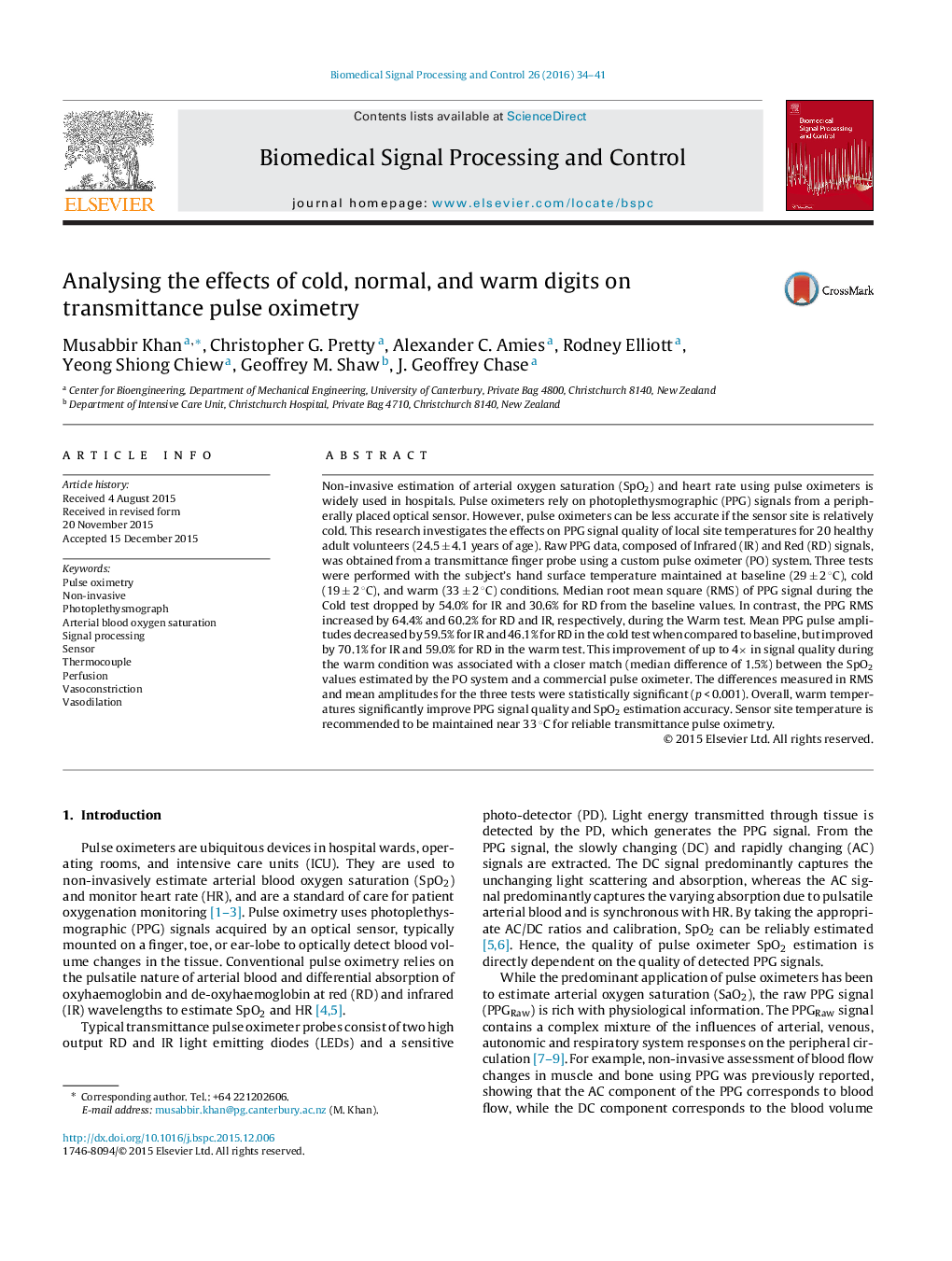| Article ID | Journal | Published Year | Pages | File Type |
|---|---|---|---|---|
| 6951259 | Biomedical Signal Processing and Control | 2016 | 8 Pages |
Abstract
Non-invasive estimation of arterial oxygen saturation (SpO2) and heart rate using pulse oximeters is widely used in hospitals. Pulse oximeters rely on photoplethysmographic (PPG) signals from a peripherally placed optical sensor. However, pulse oximeters can be less accurate if the sensor site is relatively cold. This research investigates the effects on PPG signal quality of local site temperatures for 20 healthy adult volunteers (24.5 ± 4.1 years of age). Raw PPG data, composed of Infrared (IR) and Red (RD) signals, was obtained from a transmittance finger probe using a custom pulse oximeter (PO) system. Three tests were performed with the subject's hand surface temperature maintained at baseline (29 ± 2 °C), cold (19 ± 2 °C), and warm (33 ± 2 °C) conditions. Median root mean square (RMS) of PPG signal during the Cold test dropped by 54.0% for IR and 30.6% for RD from the baseline values. In contrast, the PPG RMS increased by 64.4% and 60.2% for RD and IR, respectively, during the Warm test. Mean PPG pulse amplitudes decreased by 59.5% for IR and 46.1% for RD in the cold test when compared to baseline, but improved by 70.1% for IR and 59.0% for RD in the warm test. This improvement of up to 4à in signal quality during the warm condition was associated with a closer match (median difference of 1.5%) between the SpO2 values estimated by the PO system and a commercial pulse oximeter. The differences measured in RMS and mean amplitudes for the three tests were statistically significant (p < 0.001). Overall, warm temperatures significantly improve PPG signal quality and SpO2 estimation accuracy. Sensor site temperature is recommended to be maintained near 33 °C for reliable transmittance pulse oximetry.
Keywords
Related Topics
Physical Sciences and Engineering
Computer Science
Signal Processing
Authors
Musabbir Khan, Christopher G. Pretty, Alexander C. Amies, Rodney Elliott, Yeong Shiong Chiew, Geoffrey M. Shaw, J. Geoffrey Chase,
